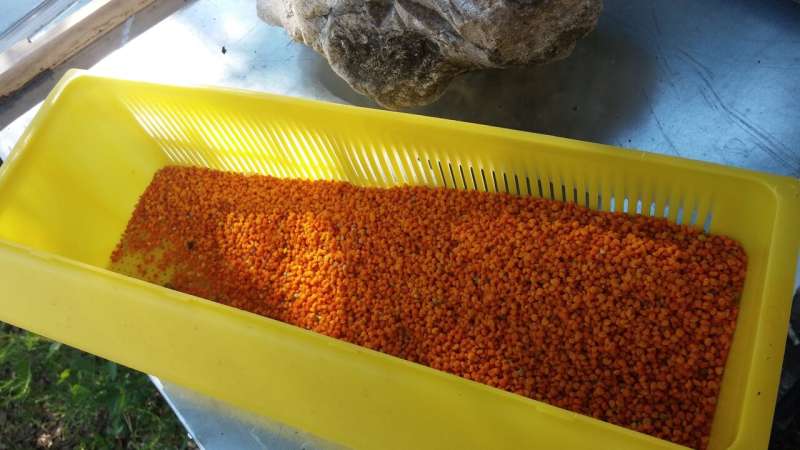Pollen collected by US honey bees in urban settings shows dramatic seasonal variation

The diversity and availability of pollen foraged by honey bees across urban and suburban areas in the US varies drastically with the seasons, according to a study published June 12, 2019 in PLOS ONE by Juliana Rangel from Texas A&M University, USA, and colleagues.
Honey bee (Apis mellifera) colonies require a diversity of protein-rich pollen in order to rear healthy brood and ensure colony survival. During certain seasons, insufficient or poor-quality pollen can limit brood nutrition. In this study, the authors investigated the variation in pollen collected by honey bees across developed landscapes in California, Michigan, Florida, and Texas over the seasons of the year.
The authors tracked a total of 394 sites with at least two hives each in urban and suburban locations across California, Texas, Florida, and Michigan. They placed a pollen trap at each hive entrance, which passively collected pollen from foraging bees, and sampled pollen from the traps in multiple months of 2014 and 2015. The researchers used a light microscope to identify pollen grains to the family, genus, and species level where possible.
The total overall pollen species diversity varied significantly across all four states, with highest diversity in California and lowest diversity in Texas. Nationally, the total pollen diversity was significantly higher in the spring across all locations as compared to other seasons. Top pollen sources across all states included legumes, oaks, roses and daisies. Only a few plant groups provided pollen throughout the year—for example, eucalyptus and palm pollen was consistently available in California and Florida.
Since pollen traps were only in use over limited periods, the assessment of pollen collection was not comprehensive, and the pollen was not quantified to examine the proportion collected of each type. However, these results provide information about honey bee foraging patterns over the year. The authors hope this might help urban planners and gardeners choose plants that can provide appropriate pollen resources to honey bees in developed areas year-round, and plan pesticide treatment regimens around honey bee foraging schedules.
The authors add: "This study describes the seasonal and geographic variation of floral sources of pollen for honey bees in urban and suburban landscapes, giving us for the first time a comprehensive look at some of the most important plants for honey bees in developed areas, and serves as a foundation for studies related to honey bee nutritional ecology in urban settings."
More information: Lau P, Bryant V, Ellis JD, Huang ZY, Sullivan J, Schmehl DR, et al. (2019) Seasonal variation of pollen collected by honey bees (Apis mellifera) in developed areas across four regions in the United States. PLoS ONE 14(6): e0217294. doi.org/10.1371/journal.pone.0217294
Journal information: PLoS ONE
Provided by Public Library of Science
















